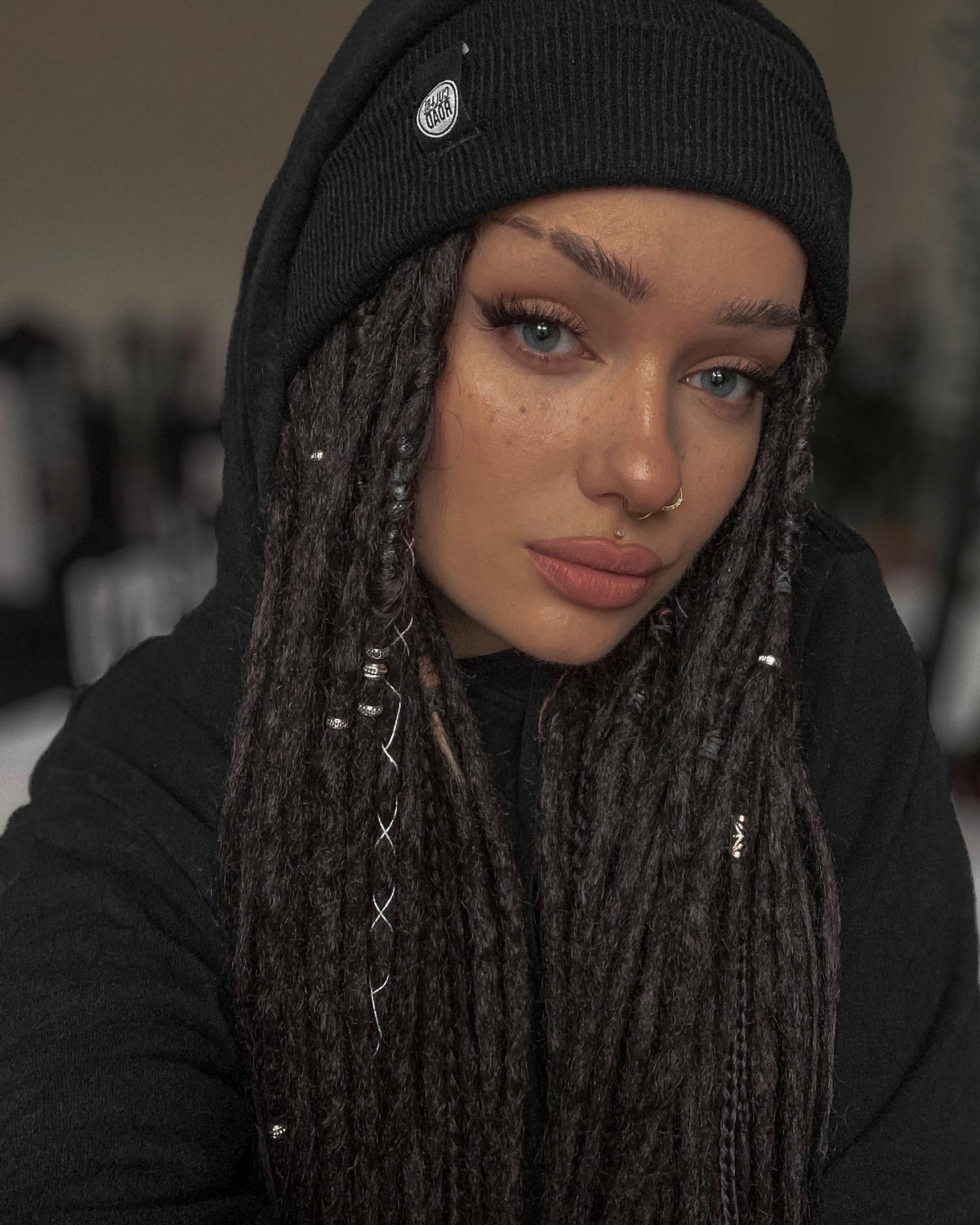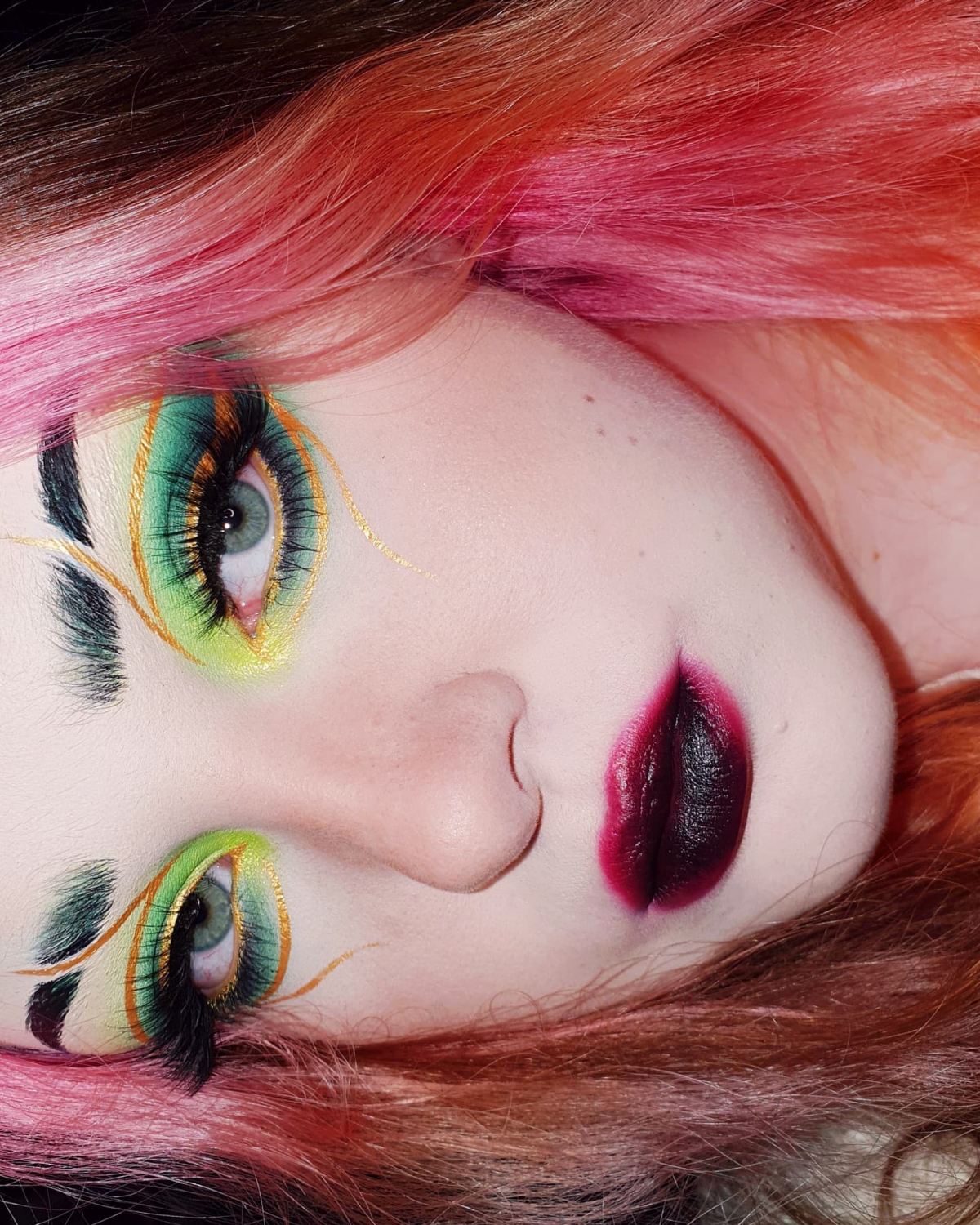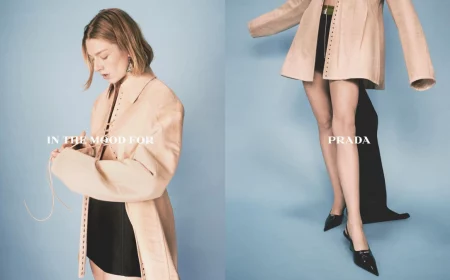Thinking About an Eyebrow Slit? A Barber’s Guide to Nailing the Look
I’ve been behind the barber chair for a long time, and I’ve seen countless styles come and go. Fades creep higher, parts get razor-sharp, but some details just stick around. The eyebrow slit is one of those classics. I still remember the first time a kid asked me for one, bringing in a magazine with a picture of a hip-hop artist. He wanted that single, defiant line in his brow. It wasn’t just about looking cool; it was about identity. And doing it right took more than just a steady hand—it took an understanding of the face and what that simple cut really meant.
In this article
Today, that request is just as common, but the reasons have multiplied. Some people want to honor the style’s roots, while others just see it as a bold fashion statement. Honestly, a lot of people just like the way it looks. As a pro who’s cut hundreds of these, I want to pull back the curtain on how it’s really done. This isn’t just about dragging a trimmer through your eyebrow. It’s a small but precise detail that deserves respect. We’ll get into how to do it safely, where the style came from, and even the science of how your eyebrow hair works. This is the stuff I teach my apprentices, and now I’m sharing it with you.

First, Know Your Canvas: The Anatomy of the Brow
Before you even think about bringing a blade near your face, you gotta know what you’re working with. An eyebrow isn’t just a random patch of hair; it’s a complex feature designed to protect your eyes. Understanding its biology is the first step to changing it safely. This is what separates a clean, pro-level job from a messy mistake you’ll regret.
Why It’s Not Permanent: The Hair Growth Cycle
Your eyebrow hair, like all body hair, follows a specific three-phase cycle. Knowing this helps you understand why a slit is temporary and exactly how long you’re signing up for it. I always walk my clients through this so they have realistic expectations.
- Anagen (The Growth Phase): This is when the hair is actively growing. For eyebrows, this phase is surprisingly short, only about 30 to 45 days. That’s why your brow hairs don’t turn into a flowing mane.
- Catagen (The Transition Phase): After growing, the follicle shrinks and the hair detaches from its blood supply. This lasts for about two or three weeks. The hair isn’t growing, but it hasn’t fallen out yet.
- Telogen (The Resting Phase): This is the final stage, where the old hair just chills in the follicle before shedding. It can last for a couple of months before a new hair pushes it out.
So, when you shave or trim a slit, you’re just cutting the hair shaft, not the root. You’ll see stubble pop up in a week or two. But for the brow to get back to its full, pre-slit glory, you have to wait for all those cut hairs to fall out and be replaced. The whole process can take anywhere from two to four months. That’s a key piece of info for anyone on the fence.

A Quick Heads Up on Skin and Follicles
The skin around your eyes is some of the thinnest on your body. Right underneath it is the bone of your skull, with not much cushion in between. This means a slip of the blade can easily cause a nick that bleeds more than you’d expect. Even more importantly, a cut that’s too deep can permanently damage the hair follicle. A shaved slit will always grow back. A slit created by a deep scar will not. Scar tissue chokes out the follicle, leaving a permanent bald patch. I’ve had people come in asking me to “fix” a scar, but once that follicle is gone, it’s gone for good.
More Than a Trend: The Cultural Story of the Slit
To really appreciate this style, you have to know where it came from. The eyebrow slit wasn’t cooked up on a fashion runway. It was born on the streets and shot to fame through the early hip-hop community. Back then, pioneering artists sported them as a sign of toughness and credibility, almost like a badge of honor that mimicked a battle scar. It was a very intentional statement.

As a barber, I saw this evolution firsthand. Young guys would come in asking for a specific look inspired by their favorite artists. It wasn’t just a random gap; it was a symbol. Over time, its meaning broadened. Skaters, punks, and other groups adopted it as a general sign of rebellion—an easy, low-commitment way to look edgy without getting a tattoo.
These days, the meaning is whatever you want it to be. Celebrities and athletes have made it completely mainstream. It can be a nod to its roots, a simple aesthetic choice, or a personal marker. I’ve even had clients ask for a slit to reclaim a scar they already had. The beauty of the style now is its flexibility, but I think it’s always important to acknowledge its origins. It gives the look a weight and history it deserves.
Pro Job vs. Bathroom Mirror: A Tale of Two Slits
There is a massive difference between a slit done in a pro’s chair and one attempted in a foggy bathroom mirror. Trust me, I’ve had to fix a lot of DIY jobs. The most common issues? Crooked lines, slits that are way too wide, and multiple slits that are unevenly spaced. Let’s break down the two approaches.

The Barber’s Chair: How We Do It
When someone sits in my chair and asks for a slit, my process is all about precision, safety, and talking it through. Here’s a quick rundown.
1. The Consultation (The Most Important Part!)
We don’t just jump in. We talk about placement, angle, width, and number. Where should it go? Usually, toward the tail of the brow looks best. Should it be vertical or slightly angled? A slight angle that follows the face’s natural lines often looks better. For width, I always start thin—you can always go wider, but you can’t go back. We decide on everything before a single tool comes out.
Quick Tip: Not sure about placement? A good rule of thumb is to imagine a line from the corner of your nostril to the outer corner of your eye. Placing the slit along that line is a classic look that flatters most face shapes. For rounder faces, a sharper, more vertical slit can add definition, while angular faces can handle a softer, slightly curved slit.

2. The Tools of the Trade
I use professional, sanitized tools. This is non-negotiable.
- A Detail Trimmer: A small T-blade trimmer gives amazing control and a clean line.
- A Straight Razor: For that extra-crisp, super-sharp look. This takes a lot of skill and a brand-new blade for every client.
- White Eyeliner Pencil: I use this to draw the lines before I cut. It shows up on all skin tones and wipes right off.
- Alcohol Wipes & a Styptic Pencil: For cleaning the area and, in the rare case of a nick, stopping any bleeding instantly.
3. The Execution
After we agree on the pencil marks, I hold the skin taut and make a single, confident pass with the trimmer or a feather-light stroke with the razor. Clean, precise, and done in seconds.
The At-Home Attempt: How to Not Mess It Up
I get the urge to try this at home. If you’re going to do it, please be safe. My advice is based on fixing the mistakes I see most often.

Your DIY Toolkit:
- A Dedicated Eyebrow Razor: Don’t use a big beard trimmer or, worse, a craft knife. Go to any drugstore or search online for a pack of single-blade detail razors like Schick Silk Touch-Up or Tinkle razors. They cost about $5-$8 and have safety guards. They’re your best bet.
- White Pencil & Good Lighting: Don’t freehand it. Mark your lines first in a well-lit space.
- Rubbing Alcohol: Clean your tool and your skin before you start.
Step-by-Step (With Caution):
- Clean the area and your razor with alcohol.
- Draw your line with the white pencil. Check it from multiple angles.
- Pull your skin tight to create a flat, stable surface.
- Go SLOW. Use short, light strokes. It’s better to make several light passes than one heavy-handed one.
- Stop and check your work. Remember, you can always take more off, but you can’t put it back on.
By the way, what does it feel like? Professionally, you’ll feel a slight scraping and the vibration of the trimmer. It shouldn’t hurt. If you’re doing it yourself, a nick from the blade will definitely sting a bit, so that light pressure is key.
What if you mess up? Don’t try to “fix” a crooked line with the razor—you’ll just make it wider and more obvious. Your best move is to grab a fine-tipped brow pencil that matches your hair color and lightly feather in the mistake. In a week or two, the hair will grow back and no one will ever know.
Not Sure You’re Ready? Try This First.
Here’s a no-commitment trick I tell my clients: grab that white eyeliner pencil and just draw the slit on. Wear it around the house for an evening. See how you feel about it in the mirror. If you hate it, it wipes right off. If you love it, you know you’re ready for the real thing.
Living With Your Slit: Maintenance and Growing It Out
Getting the slit is easy. The real work is in the upkeep—or the awkward grow-out phase if you decide you’re over it.
Keeping It Sharp
To maintain that crisp look, you’ll need to re-shave the slit every 7-14 days, depending on how fast your hair grows. Stubble will appear in about a week. Just use the same careful technique you (or your barber) used for the initial cut.
When You Regret It: The Grow-Out Phase
The stubble phase can be a little awkward. My best advice? Fake it ’til you make it with makeup. A fine-tipped brow pencil can draw in tiny hair-like strokes, and a clear or tinted brow gel can help hold the surrounding hairs over the gap. Just be patient. It’ll take a full two to four months for the brow to look completely normal again.
Taking It to the Next Level: Advanced Designs
Once you’ve mastered the single slit, you might get tempted by more complex designs. To be frank, these are almost always best left to a pro.
- Double or Triple Slits: The trick here is perfect spacing. The gaps between the slits need to be as consistent as the slits themselves. I use a small comb as a spacer to get the lines just right.
- Curved Slits: Creating a clean curve that follows the brow’s arch is much harder than a straight line and requires a series of tiny, precise strokes.
- The “X” Slit: This is a very bold look, made by creating two diagonal slits that intersect to form an ‘X’. It requires absolute precision to ensure the center point is clean and the lines are sharp. It’s incredibly difficult to do on your own without creating a messy, wide patch. Definitely a ‘professional only’ style.
Quick FAQs from the Barber Chair
I get asked these all the time, so let’s clear them up.
How much does it cost?
At most barbershops, adding one or two slits to your haircut is a quick add-on. Expect to pay somewhere between $5 and $15. Compare that to a DIY pack of razors, which costs about $5-$8 and will last you for months.
Will the hair grow back thicker or a weird texture?
Nope! That’s a total myth. Shaving only cuts the hair at the surface; it doesn’t change the follicle underneath. Your hair will grow back with a blunt tip, which might feel coarse for a few days, but it’s the exact same hair.
Can I have an eyebrow slit and still look professional?
Honestly, it depends on your workplace. In creative or casual fields, nobody will bat an eye. In more conservative corporate settings, a very thin, subtle slit might be fine, but a bold triple-slit design could be pushing it. When in doubt, start with one thin slit and see how you feel.
Inspirational Gallery
The Pro Tool vs. The Bathroom Razor: A barber’s choice for a clean slit is almost always a professional T-blade trimmer, like the Andis T-Outliner. Its fine-toothed blade creates a crisp, precise line without pulling hair or irritating the skin.
The DIY Alternative: A single-blade facial razor can work in a pinch, but it’s far less precise. The wider blade makes it easy to create a gap that’s too wide, and there’s a higher risk of nicks on the sensitive brow bone. For a sharp look, the right tool is non-negotiable.
While the eyebrow slit surged in the ’90s with hip-hop icons like Big Daddy Kane and Vanilla Ice, its roots are often traced back to street culture, where it was a symbol of toughness, affiliation, or simply a standout style choice.
That fresh slit needs a little TLC to stay sharp and avoid irritation. For the first 24 hours, keep it simple:
- Do: Gently pat the area with a cool cloth if you experience any redness.
- Don’t: Apply exfoliants, retinols, or alcohol-based toners directly on or near the cut.
- Do: Use a fragrance-free, soothing balm like La Roche-Posay Cicaplast Baume B5 if the skin feels dry or tight.
My slit is in that awkward, fuzzy regrowth stage. What’s the best move?
You have two main options. First, you can visit your barber for a quick touch-up. They can easily re-define the line in a minute or two, keeping it sharp. Second, you can embrace the grow-out. Let the hairs fully return, which can take 4-6 weeks, and then decide if you want to start fresh. Trying to fix the fuzz yourself often leads to widening the slit or making it uneven, so a professional touch-up is usually the safest bet.
The single most common mistake? Going too wide. A true eyebrow slit is a whisper, not a shout. A razor-thin line, barely wider than the blade that made it, looks intentional and stylish. A wide, chunky gap can look less like a fashion statement and more like an unfortunate accident with a pair of clippers. Ask your barber for a ‘fine line’ or ‘single razor width’ for the cleanest result.
Beyond the classic single vertical cut, the style has evolved. For those looking for a modern twist, consider these variations:
- The Double Slit: Two parallel, thin lines spaced closely together, often on the tail of the brow.
- The Angled Slit: A cut that follows the natural arch of the brow for a more dynamic look.
- The Fade Combo: A slit designed to align perfectly with the sharp line of a temple fade, creating a seamless connection between hair and brow.
Not ready for the blade? Fake it ’til you make it. The no-commitment eyebrow slit is a makeup artist’s secret. Take a fine, angled brush and a full-coverage concealer, like NARS Radiant Creamy Concealer. Draw a thin vertical line where you want the slit. Pat gently to blend the edges, then set with a translucent powder. It creates a surprisingly realistic illusion for a night out, with zero risk of regret.
- Adds an instant, sharp edge to your look.
- Defines and draws attention to the eye area.
- Breaks up a strong, heavy brow for a lighter feel.
The secret behind these benefits? Strategic placement. A well-placed slit acts like a contouring tool, subtly altering how your features are perceived.
Fact: The average eyebrow has around 250 hairs, and each one is on its own unique growth cycle.
This is why a slit never grows back all at once. Some hairs you cut may have been in the resting (Telogen) phase and were about to fall out anyway, while others were actively growing (Anagen). The result is that staggered, ‘fuzzy’ regrowth instead of a clean, uniform return. It’s a biological lottery, not a flaw in the technique.










